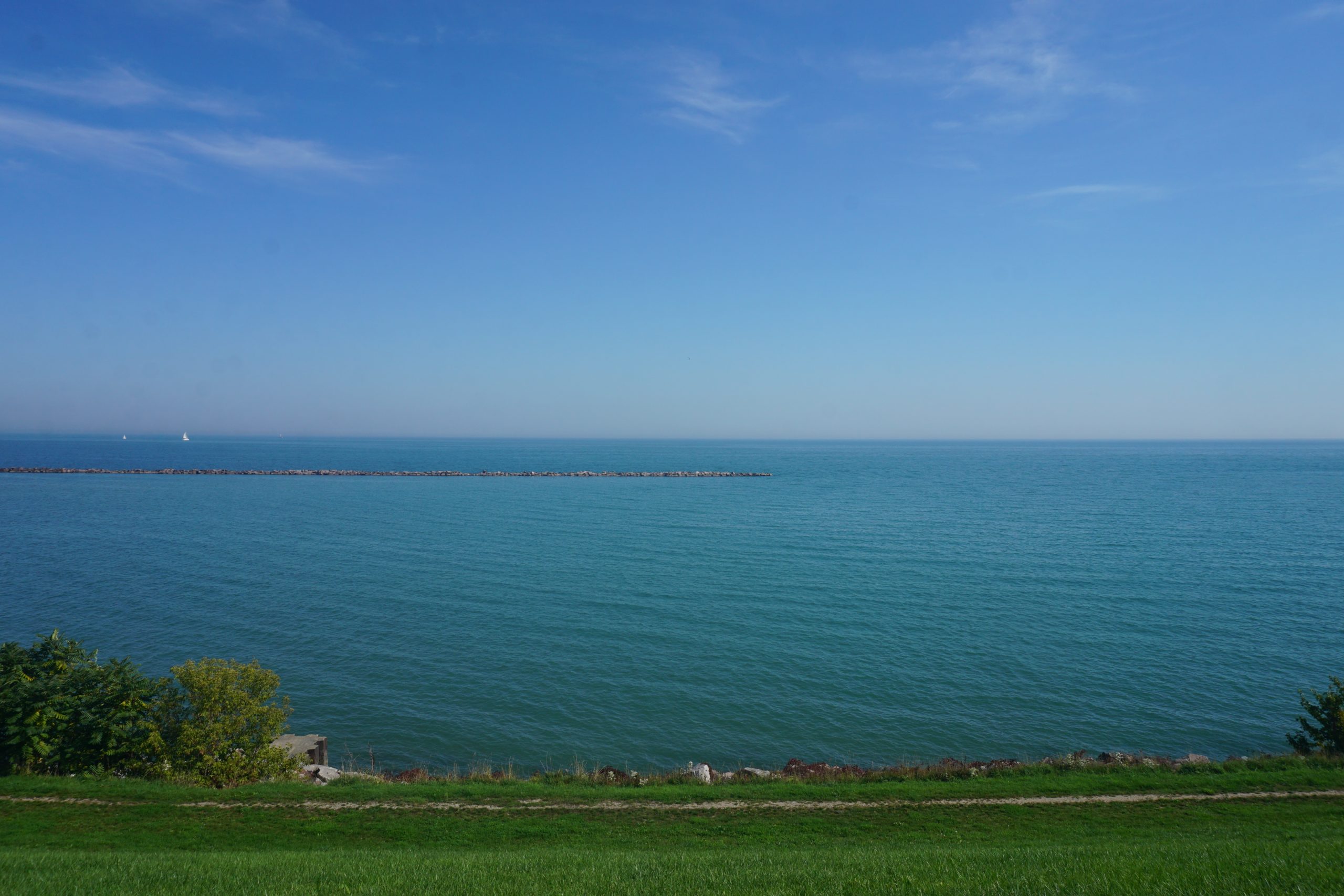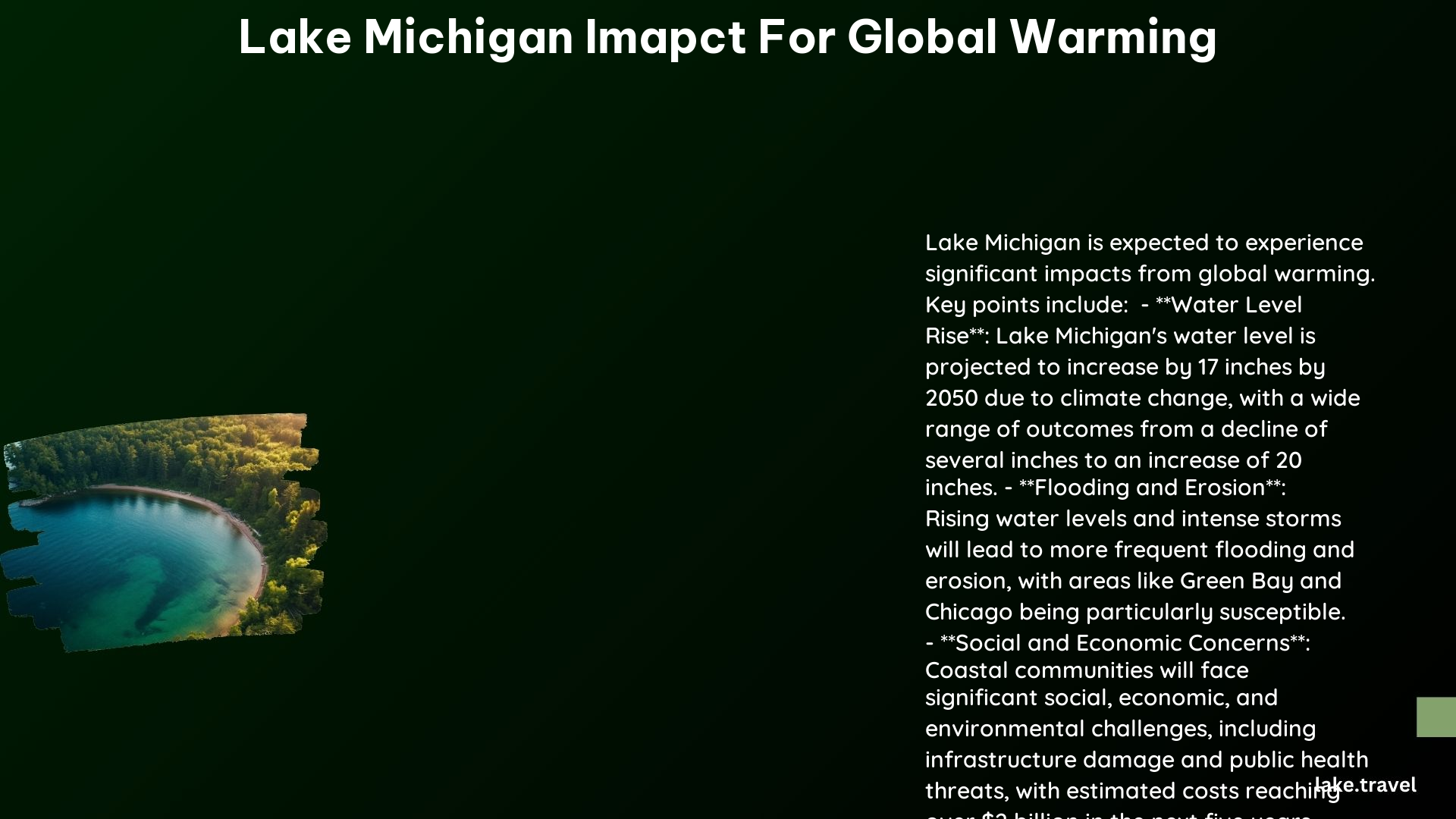As the effects of global warming become increasingly apparent, the iconic Lake Michigan is poised to face a range of challenges that will reshape the region’s ecosystems, economies, and communities. From rising water levels to shifting precipitation patterns, the impacts of climate change on Lake Michigan are multifaceted and far-reaching.
Rising Water Levels: A Coastal Conundrum

One of the most significant impacts of climate change on Lake Michigan is the projected rise in water levels. Experts predict that by 2050, the lake’s water levels could increase by as much as 17 inches. This rise is attributed to a combination of factors, including changes in precipitation, evaporation, and runoff patterns.
The consequences of this water level rise are already being felt along the lake’s coastline. Coastal communities and infrastructure are facing increased risks of flooding and erosion, with some areas experiencing up to 30% of census tracts being inundated in recent years. The Green Bay and Chicago regions, in particular, are highly vulnerable to these flooding events.
Shifting Precipitation Patterns: A Delicate Balance

In addition to rising water levels, climate change is also expected to bring more extreme precipitation events to the Lake Michigan region. These changes in precipitation patterns can have far-reaching effects on the lake’s ecosystems and human activities.
Warmer temperatures will lead to increased evaporation, which can contribute to lower water levels during certain periods. Conversely, the more frequent and intense precipitation events can result in higher water levels and increased flooding. This delicate balance between precipitation and evaporation will require careful management and adaptation strategies to mitigate the impacts.
Ecosystem Disruption: Invasive Species and Waterborne Bacteria
As the climate continues to change, the Lake Michigan ecosystem is also facing significant challenges. Rising water temperatures will create an environment more hospitable to invasive species, which can disrupt the delicate balance of the lake’s aquatic communities.
Furthermore, the warmer temperatures and changes in water quality can also encourage the growth of certain waterborne bacteria, posing risks to human health and recreational activities. Monitoring and managing these ecological shifts will be crucial to preserving the lake’s natural resources and ensuring the safety of those who rely on it.
Economic and Social Impacts: Shipping, Fisheries, and Recreation
The changes in Lake Michigan’s water levels and environmental conditions will have far-reaching economic and social consequences. Shipping and transportation on the lake may be disrupted, affecting the movement of goods and the livelihoods of those who depend on this industry.
Fisheries, a vital component of the region’s economy, may also face challenges as the lake’s ecosystem undergoes transformation. Recreational activities, such as boating, swimming, and fishing, could be impacted by the changing water levels and water quality, affecting the tourism industry and the enjoyment of the lake by local communities.
Uncertainty and Variability: The Need for Adaptive Management
While the overall trend points to a moderate rise in water levels, there is significant variability in the projections, with some models indicating a potential decline in water levels. This uncertainty highlights the need for adaptive management and resilience in the face of climate change.
Policymakers, resource managers, and local communities must work together to develop and implement strategies that can address the multifaceted impacts of climate change on Lake Michigan. This may involve infrastructure upgrades, ecosystem restoration efforts, and the adoption of sustainable practices to mitigate the effects and build resilience.
By understanding the specific challenges facing Lake Michigan and taking proactive measures, we can work to preserve the lake’s natural beauty, ecological integrity, and the economic and social well-being of the communities that depend on it.
Reference:
– Great Lakes Integrated Sciences and Assessments (GLISA)
– National Oceanic and Atmospheric Administration (NOAA) Great Lakes Environmental Research Laboratory
– U.S. Army Corps of Engineers: Great Lakes Water Levels
